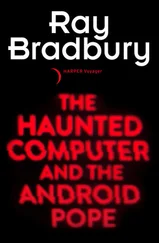“I’m getting into software,” John had told his skeptical colleagues back in the “early days” of late 1982. “I can make more money on one software deal than I can make on a year’s worth of literary deals.” The real stars of the coming software revolution wouldn’t be its chroniclers and manual writers but the programmers themselves! So he set out to find them and represent them. He started combing the aisles of the big trade shows like COMDEX and the National Computer Conference and even the once-tiny, but now huge, West Coast Computer Faire.
To whom would he represent these new media stars? To the customers Brockman knew best, of course—the book publishers and other East Coast corporate giants who were watching the success of outfits like Spinnaker and were indeed contemplating the expenditure of enormous sums in order to break into this unbelievably lucrative software publishing business.
And as Brockman predicted, the biggies started to buy, beginning with a contract he negotiated between Bruce & James, a software developer, and Simon & Schuster, for WordVision, an inexpensive word-processing program that Simon & Schuster planned to sell through bookstores. When the word spread around that this New York literary agent was able to sell software to big publishers, the inquiries came pouring in, and some of them panned out spectacularly well.
Brockman’s biggest star was Sat Tara Singh Khalsa, a blond, bearded programmer-software publisher from Montana who was a convert to the Sikh religion. With his all-white suits, white turban, red rose boutonniere, and diamond stickpin, he was just the model of the programmer-as-media hero that Brockman was looking for. He also had a very attractive product in Typing Tutor III, a program that taught touch-typing skills by using, among other devices, a kind of shoot-’em-up game in which the alien invaders could be destroyed only by pressing the correct key.
Brockman rented a suite at New York’s posh Carlyle Hotel, set up a computer, and invited the heavies from the newly created “electronic publishing” divisions of the biggest publishers to come and see Typing Tutor III in action. He ended up selling the program to Simon & Schuster for a reputed seven-figure advance and a royalty arrangement that could make his client as much as $20 million in the near future. (By early 1985 the program was selling moderately, but far from spectacularly well, and Sat Tara had been ousted from a position of leadership in Kriya Systems, the company he had founded.)
Indeed, for a time, the publishers were on a buying spree. Millions were spent, not just through Brockman— although he did garner his share of the early sales, and more than his share of the early publicity in his self-created role as “software agent.” Although the most respected developers— Joyce Hakansson foremost among them—went direct to publishers, the idea of a “software agent” had captured the imagination of the small army of journalists who had turned their attention to events in the software world. Every publication from Info World to the Wall Street Journal and the New York Times published pieces on Brockman.
Then Brockman began representing the authors of computer books, which were one of the most lucrative spinoffs of the microcomputer boom. Most of the instruction manuals that came with both software and hardware—known in the trade jargon as “documentation”—were so awful and incomprehensible that a few professional writers were beginning to make good money by writing how-to books to supplement the manuals supplied by manufacturers. A cottage industry had sprung up around these books, with small publishing houses on the West Coast turning out profitable titles month after month. Brockman’s clients were among the first to get serious attention from the larger East Coast publishing houses like Simon & Schuster, Doubleday, and Harper & Row.
In his characteristically immodest fashion, Brockman began sending out press releases, trumpeting his latest triumphs in the computer-book field. Among those triumphs was an $800,000 contract for a series of books by the editors of PC World magazine, followed within a matter of weeks by a $600,000 contract for another book series to be created by the editors of InfoWorld magazine. Then came his biggest coup. In April 1983, he negotiated the largest advance in the history of trade paperback publishing—$1.3 million from Doubleday based on a ten-page outline by Stewart Brand, the principal author of the hugely successful Whole Earth Catalog. The Proposed book was to be titled The Whole Earth Software Catalog.
The big-figure blockbusters announced by Brockman were only the most spectacular examples of the book deals publishers were making at a frantic pace throughout 1983 and 1984. Booksellers estimated that, based on the rate at which publishers were signing up authors, computer books would outsell fiction in 1984.
By 1983 and early 1984, the book publishing houses were racing, lemming-like, to sign up their own software super-stars. Bookstores were seen as the natural place to sell software, and the new buzzphrase in book circles was “electronic publishing.” As the electronic publishing divisions grew more sophisticated, they found their way to many of the software development groups springing up around the country. And there they advanced millions of dollars for products that did not yet exist.
It must have been in April or May 1984 that software publishers began calling around to their friends in the industry. “Are you folks experiencing something of a slowdown?” they asked, slightly euphemistically. Most said yes. Some said that slowdown was too mild a word. One of the computer magazines noted that advertising pages were down 50 percent from the previous year. That’s quite a slowdown.
The venture capital firms were getting edgy too. The bloom was off the software rose. All the software public offerings, even those from the phenomenally successful Lotus, were selling at less than their initial public offering price. Talk of an industry-wide shakeout started appearing in the trade media. People inside the industry and out in the software-buying world were no longer assuming that today’s spectacular product announcement would turn into tomorrow’s successful product introduction and next week’s sales bonanza.
As it turned out, some of the highly touted, richly funded, anxiously expected new products—particularly those of the big publishing corporations—would never exist. A new word came into the vocabulary: Vaporware, which seems to have been first applied to VisiCorp’s ill-fated VisiOn system, was defined as software that disappears like mist before your eyes as its delivery date approaches. And sometimes when a product did appear, the investors and publishers almost wished that it hadn’t. The market ended up being more sophisticated than they were, and some of those long-delayed, over-advanced products simply didn’t sell when they hit an overcrowded market. It was humiliating. Some of the corporate entrants started to make their exits from the software game.
Reader’s Digest pulled out relatively early. Prentice-Hall was rumored to have advanced nearly $10 million in new product development and had almost nothing to show for it. Simon & Schuster—long after it had contracted with Bruce & James for Word Vision and after it had included the title as part of an extensive advertising campaign for a new line of productivity tools—did finally get the program, and it was, finally, acceptable enough to publish. But it was nearly a year late in its arrival, by which time the market for word-processing systems was glutted. Sales were abysmal. The Bruce & James partners split up, and the rest of the planned Bruce & James line was quietly shelved. What was going on? How could savvy and well-funded outfits like Reader’s Digest, Prentice- Hall, and Simon & Schuster fail so spectacularly where “amateurs” like Microsoft and Brøderbund had made millions?
Читать дальше










